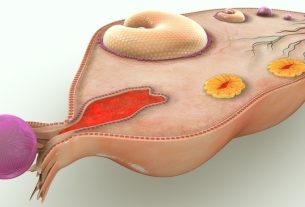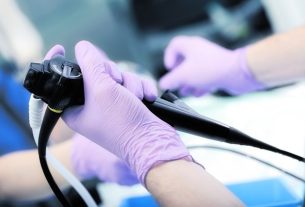The spermogram test aims to evaluate the quantity and quality of a man’s sperm, and is mainly requested to investigate the cause of the couple’s infertility, for example. In addition, spermograms are also normally requested after vasectomy surgery and to evaluate the functioning of the testicles.
The spermogram is a simple test that is carried out by analyzing a semen sample that must be collected by the man in the laboratory after masturbation. So that the test results are not interfered with, it is recommended that the man does not have sexual intercourse 2 to 5 days before the test and, in some cases, it may be recommended that the collection be carried out on an empty stomach.

How is done
To carry out the exam, a semen sample is necessary, which should preferably be collected in the laboratory through masturbation, and, in some cases, fasting may be recommended, the time of which must be determined by the doctor. The ejaculated material is deposited in a specific container provided by the laboratory and then sent for analysis.
It is important that the man does not have sexual intercourse or any other action that causes ejaculation 2 to 5 days before taking the exam, as this can influence the total amount of sperm present in the semen. Furthermore, masturbation for collection should not be done with the aid of lubricants, as they may interfere with the test results.
Normally, laboratories do not accept sperm that has not been collected at the clinic itself and it is not recommended that sperm be collected after coitus interruptus or through a condom, as this can also interfere with the test results.
What is analyzed
Semen analysis occurs in two stages, the first being a macroscopic analysis and the second a microscopic analysis. Both stages are essential for evaluating the quality and quantity of sperm capable of fertilizing an egg, thus indicating the man’s reproductive capacity.
A macroscopic analysis, that is, with the naked eye, takes into account the evaluation of criteria such as viscosity, color, pH, volume and time that the semen takes to become completely liquid, called liquefaction. A microscopic analysis involves the analysis of criteria that can only be visualized with the aid of a microscope, such as sperm concentration per mL and total ejaculate volume, motility, vitality and morphology.
Based on the analyzes carried out in the laboratory, a report is released containing all the parameters related to the exam in accordance with the recommendations of the World Health Organization. Understand how to interpret the spermogram result.

What is it for
Normally, the spermogram is recommended by the urologist when the couple has difficulty getting pregnant, thus investigating whether the man is capable of producing viable sperm in sufficient quantities. Furthermore, it may be indicated when a man presents any genetic, physical or immunological sign that could interfere with male fertility.
Thus, the spermogram is carried out to evaluate the functioning of the testicles and the integrity of the epididymis, thus analyzing the quality and quantity of sperm produced by men.
Complementary exams
Depending on the results of the spermogram and the man’s clinical condition, the urologist may recommend carrying out additional tests, such as:
- Spermogram under magnificationwhich allows a more precise analysis of sperm morphology;
- DNA fragmentationwhich checks the amount of DNA that is released from sperm and remains in the seminal fluid, which may indicate infertility depending on the concentration of DNA;
- FISHwhich is a molecular test carried out with the aim of checking the quantity of deficient sperm;
- Viral load testwhich is normally requested for men who have diseases caused by viruses, such as HIV, for example.
In addition to these complementary tests, seminal freezing may be recommended by the doctor if the man is going to undergo or is undergoing chemotherapy treatment.
Bibliography
- WORLD HEALTH ORGANIZATION. WHO laboratory manual: Examination and processing of human semen . 2018. Available at: <https://apps.who.int/iris/bitstream/handle/10665/44261/9789241547789-por.pdf?ua=1>. Accessed on Aug 26, 2019

Sign up for our newsletter and stay up to date with exclusive news
that can transform your routine!
Warning: Undefined array key "title" in /home/storelat/public_html/wp-content/plugins/link-whisper-premium/templates/frontend/related-posts.php on line 12
Warning: Undefined array key "title_tag" in /home/storelat/public_html/wp-content/plugins/link-whisper-premium/templates/frontend/related-posts.php on line 13



